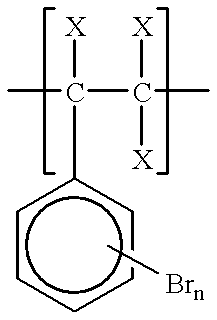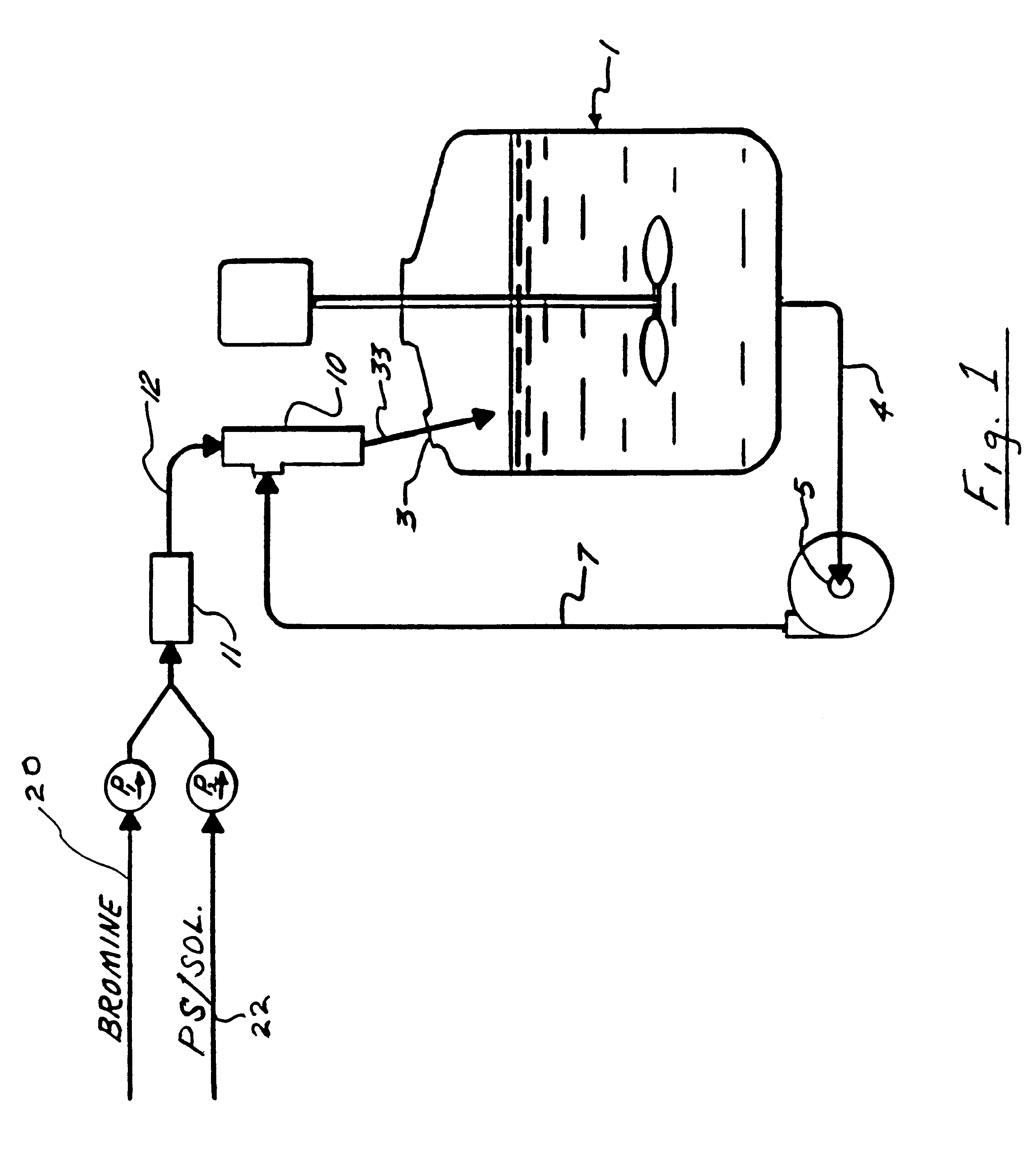Process for brominating polystyrenic resins
a technology of brominated polystyrene and resin, which is applied in the field of process, can solve the problems of severe corrosion of metal process equipment, unsatisfactory alkyl halides, and inability to produce total chlorine content, and achieve the effect of reducing the number of corrosions and corrosions of metal process equipmen
- Summary
- Abstract
- Description
- Claims
- Application Information
AI Technical Summary
Benefits of technology
Problems solved by technology
Method used
Image
Examples
examples ii
and III prepare brominated polystyrene in accordance with the teachings of U.S. Pat. No. 5,532,322.
example ii
A solution of 75.10 g (0.721 / n mole) of polystyrene (Mitsubishi Kasei Polytex, M.sub.w =270,000) in 750 g of 1,2-dichloroethane (EDC, containing 12 ppm water) was prepared in a 5-L jacketed glass reactor equipped with a mechanical paddle stirrer, condenser, and thermowell. The temperature of the reaction was controlled with an ethylene glycol circulating bath on the reactor jacket. After cooling to 15.degree. C., 11.03 g of antimony (III) oxide was added to the polystyrene solution. A previously prepared solution of 149.7 g (0.937 mole) bromine and 66.3 g (0.935 mole) chlorine in 505 g cold (-5.degree. C.) EDC was added to the reactor under the liquid surface through a diptube attached to the cooled bromine chloride feed reservoir. The reaction temperature was slowly increased from 10.degree. C. to 25.degree. C. during the 2 hour addition. The mixture was then held at 30.degree. C. until hydrogen halide evolution was complete (1.5 hr) as indicated by an end of the weight gain of the...
example iii
Example II was repeated using 230.8 g (2.00 mole) commercial bromine chloride with 80.2(0 g (0.770 / n mole) polystyrene and 11.77 g Sb.sub.2 O.sub.3. The water washed and neutralized organic phase was divided into two equal portions. One portion was added to 1.5 L of methanol as in Example I to obtain 101.6 g of light yellow solid (product A) after drying to constant weight at 150.degree. C. The other portion was added dropwise to 1.9 L of hot (89.degree. C.-94.degree. C.) water to precipitate the product and distill the solvent. The dry light yellow solid (product B) weighed 100.3 g.
In Table I, a compilation of the properties of the brominated polystyrene products produced in Examples I-III is given. In addition, for comparison purposes, the properties of Ferro Corporation's Pyro-Chek.RTM. 68PB flame retardant are given. Pyro-Chek.RTM. 68PB is believed to be produced in accordance with the teachings of U.S. Pat. No. 4,352,909.
PUM
| Property | Measurement | Unit |
|---|---|---|
| Fraction | aaaaa | aaaaa |
| Fraction | aaaaa | aaaaa |
| Fraction | aaaaa | aaaaa |
Abstract
Description
Claims
Application Information
 Login to View More
Login to View More - R&D
- Intellectual Property
- Life Sciences
- Materials
- Tech Scout
- Unparalleled Data Quality
- Higher Quality Content
- 60% Fewer Hallucinations
Browse by: Latest US Patents, China's latest patents, Technical Efficacy Thesaurus, Application Domain, Technology Topic, Popular Technical Reports.
© 2025 PatSnap. All rights reserved.Legal|Privacy policy|Modern Slavery Act Transparency Statement|Sitemap|About US| Contact US: help@patsnap.com



